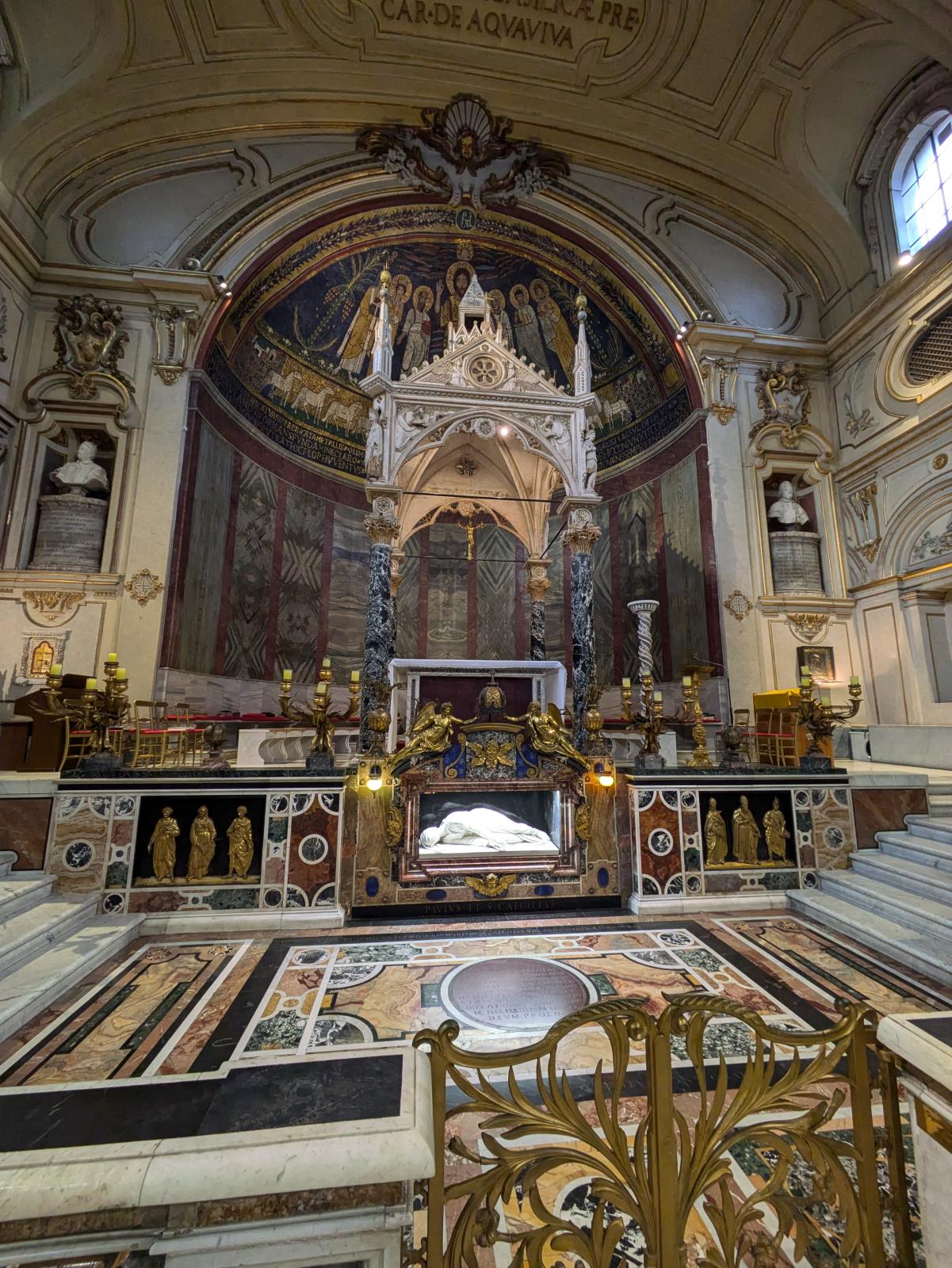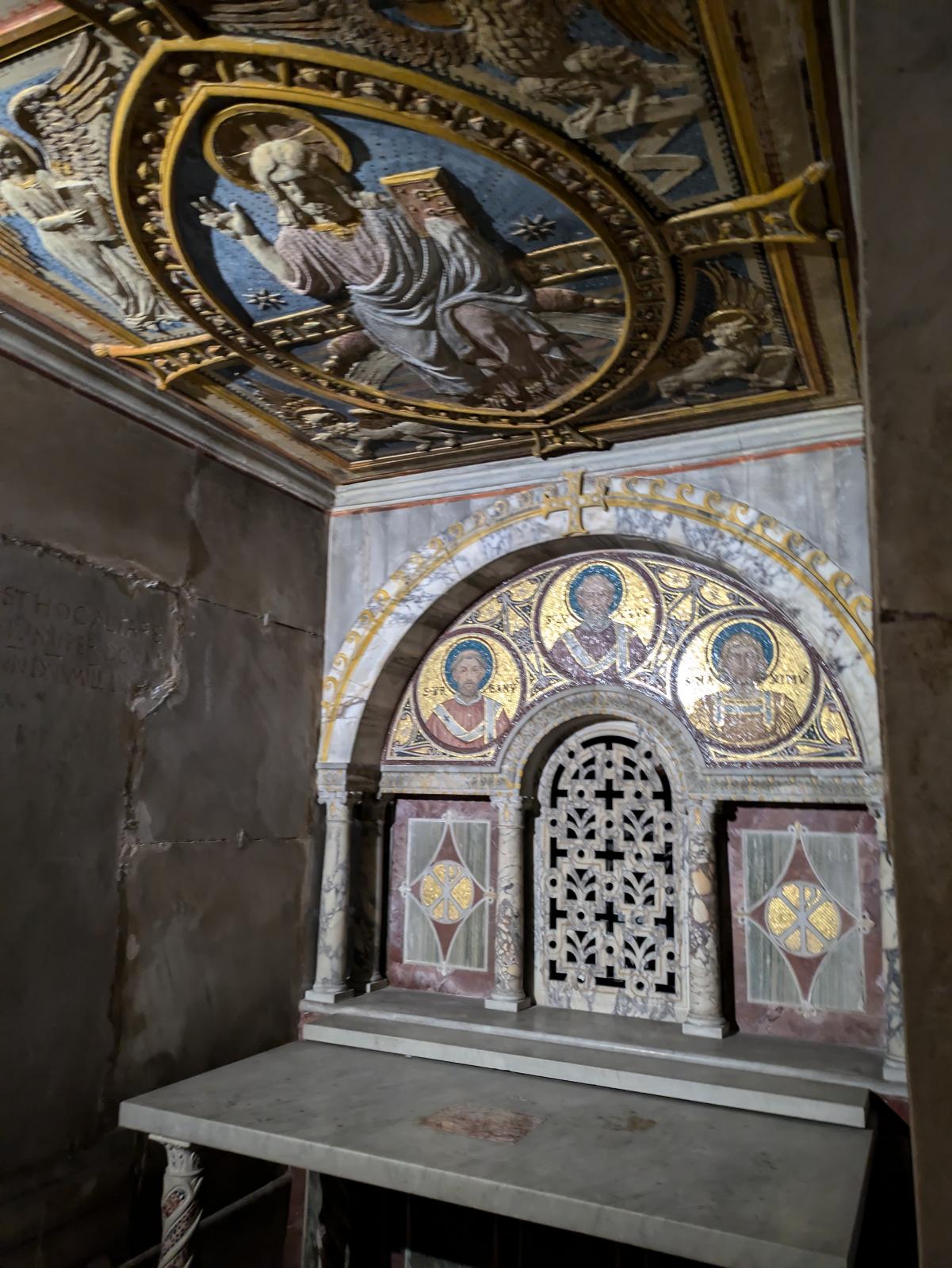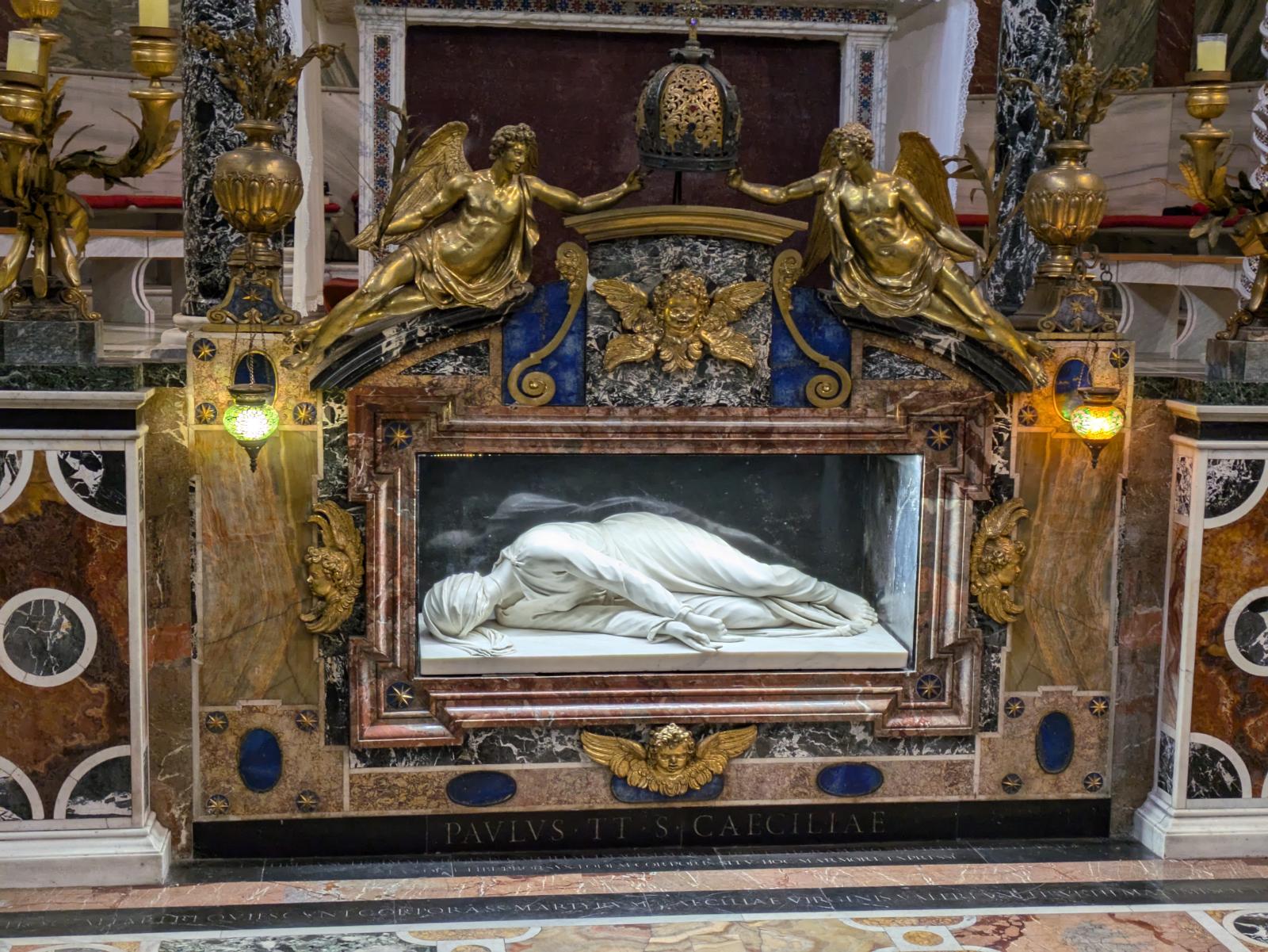By Christian Jenkins
 We’re off the train and walking through rather grubby, graffiti lined streets. I’m still not quite sure where we’re going, but after a large lunch, we’re off again and eventually arrive in an unassuming piazza full of irate drivers honking and trying to get through the narrow-cobbled streets.
We’re off the train and walking through rather grubby, graffiti lined streets. I’m still not quite sure where we’re going, but after a large lunch, we’re off again and eventually arrive in an unassuming piazza full of irate drivers honking and trying to get through the narrow-cobbled streets.
We walk through a grand arch and into a peaceful manicured courtyard where the gentle trickle of the fountains punctuates the quiet, and roses spread their scent all around. We’ve arrived at the church of St Cecilia in Trastevere, Rome. A musician friend and I have made this our first stop on pilgrimage to give thanks to St Cecilia for her patronage.
The portico leads us into a light and airy gilded church, the high altar sitting above a statue. This famous marble statue by Carlo Maderno shows St Cecilia as she was found incorrupt in 1599, her pose still showing three fingers on one hand, and one finger on the other, her unwavering faith in the Trinity.
St Cecilia is a martyr, who was persecuted and martyred by the Romans on this very site.
 She was born into a wealthy Roman family and brought up a Christian, and from a young age she dedicated her life to God and vowed to remain a virgin. Despite her vow she was married to Valerian, who respected her vow of virginity, converted to the faith and died a martyr himself.
She was born into a wealthy Roman family and brought up a Christian, and from a young age she dedicated her life to God and vowed to remain a virgin. Despite her vow she was married to Valerian, who respected her vow of virginity, converted to the faith and died a martyr himself.
After her husband’s martyrdom, Cecilia continued to use her home as a refuge for Christians, a risky thing in Rome at the time, and eventually due to her refusal to hide her faith she was sentenced to death. Her first execution was to be by suffocation in her own bath house, but after a day and night, she miraculously lived. This only infuriated the authorities who ordered her beheading, but after three blows with a sword (Roman law forbade a fourth), she was still alive. She remained alive with life threatening wounds for a few days, continuing to preach and pray during this time.
She died as the statue portrays, in prayer.
We climb down the stairs into the crypt of the Church which was built on the house where St Cecilia died. In this ancient world the floors are where she would have walked, the walls bear testimony to the thousands of years of history which have come and gone.
 A narrow corridor takes us to the site under the high altar, where her incorrupt relics are. We knelt and said a rosary for our intentions and the intentions of musicians around the world.
A narrow corridor takes us to the site under the high altar, where her incorrupt relics are. We knelt and said a rosary for our intentions and the intentions of musicians around the world.
St Cecilia is patron of music, as on her wedding day ‘she sang in her heart to the Lord’, showing her inner commitment to God during the celebration. Her faith was solid that He would preserve the vow she made.
For musicians, our song should always be to the Lord. He has given us our talents, not to hide under a bushel, but to be placed on a pedestal to show the light of the world to all nations.
We must be more like St Cecilia, singing to him in our hearts, showing our faith to the world, bringing the light of Christ to all peoples and nations to truly show that God is our creator, and that we should give Him praise.
St Cecilia - pray for us.
Christian Jenkins is a professional singer who trained at the Royal Welsh College of Music. He was part of the music team at the Diocesan Lourdes Pilgrimage and regularly sings at St Dominic’s Priory – The Rosary Shrine and other choirs in London and the UK. He specialises in Gregorian chant, but also performs in operas and concerts around the country.
